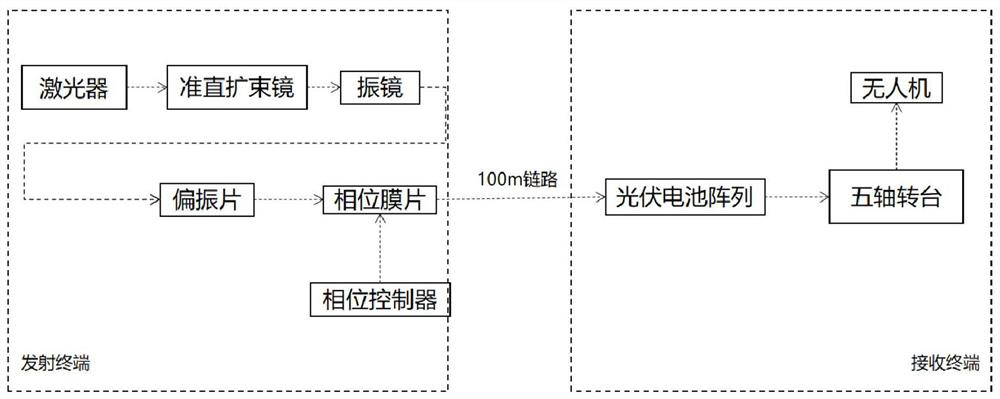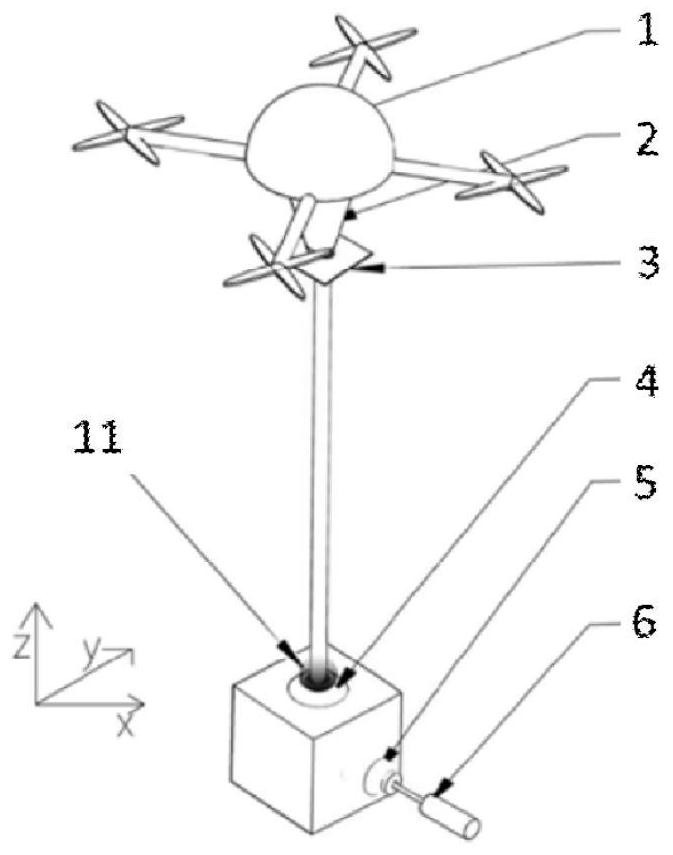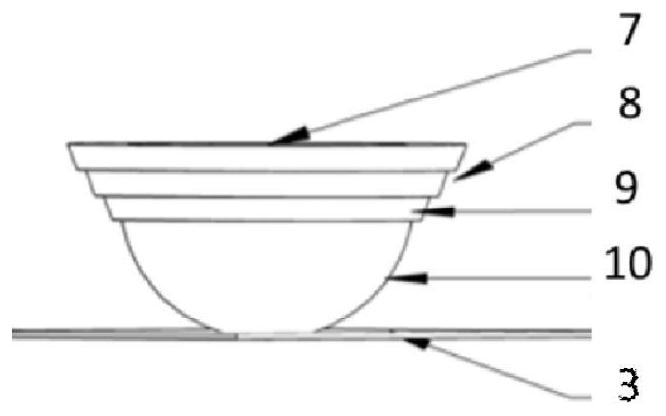Unmanned aerial vehicle terminal laser energy transfer system based on three-stage tracking and light field regulation and control
A technology of laser energy transmission and unmanned aerial vehicle, applied in optics, optical components, control of finding targets, etc., can solve the problems of not avoiding the dead zone of electrode connection, uneven distribution of laser beam energy, and no matching of photovoltaic cells.
- Summary
- Abstract
- Description
- Claims
- Application Information
AI Technical Summary
Problems solved by technology
Method used
Image
Examples
Embodiment Construction
[0036] Such as Figure 1 ~ Figure 3 As shown, this embodiment involves a UAV terminal laser energy transmission system based on three-level tracking and phase modulation, including: UAV 1, terminal five-axis turntable 2, photovoltaic cell array carrying module 3, and tracking galvanometer Unit 4, spatial optical phase modulation diaphragm 11, collimating beam expanding module 5 and high-power laser 6, wherein: the Gaussian laser first passes through the collimating beam expanding system for collimating and expanding the beam and homogenizing the energy so that the diameter of the spot To reach the appropriate range of coverage of the spatial optical phase modulation diaphragm, and then use the galvanometer tracking device to perform rough adjustment of the light field tracking UAV. Light field, the Gaussian light field of the laser is modulated into an optimal light field suitable for the arrangement of photovoltaic cells, and the fine-tuning and tracking alignment of the ligh...
PUM
 Login to View More
Login to View More Abstract
Description
Claims
Application Information
 Login to View More
Login to View More - R&D
- Intellectual Property
- Life Sciences
- Materials
- Tech Scout
- Unparalleled Data Quality
- Higher Quality Content
- 60% Fewer Hallucinations
Browse by: Latest US Patents, China's latest patents, Technical Efficacy Thesaurus, Application Domain, Technology Topic, Popular Technical Reports.
© 2025 PatSnap. All rights reserved.Legal|Privacy policy|Modern Slavery Act Transparency Statement|Sitemap|About US| Contact US: help@patsnap.com



